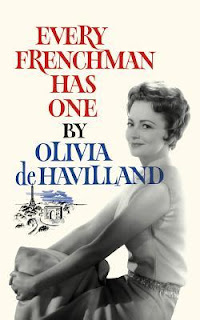 |
| Capitol Theatre - Rome, NY |
The festival is three days but I was only able to attend the first two days before heading back home. In addition to the festival films, there were also several screenings of the King of Jazz (1930) in the smaller theatre next door. I took advantage of the opportunity to see a polished up version of this odd yet hypnotizing musical revue.
There are plenty of perks that come with attending Capitolfest. You're welcomed with a badge and a printed festival guide complete with a schedule and very thorough notes on each film. The majority of the movies were shown in 35mm, much preferred over digital by many. It doesn't make much difference to me but it made the world of difference to many of the attendees. Prints of the various films shown were provided Universal Pictures, UCLA Film & Television Archive, MoMA, The Library of Congress, private collectors and other sources. There were intermissions and extended lunch and dinner breaks. This made long festival days much more manageable. The dealer's room was stocked with goodies and festival goers often stepped away from the festival to shop for some gems and enjoy the air conditioning. There was a mixer, a barbeque, lots of snacks at the concession stand and friendly staff members ready to answer any question. And if you were lucky you caught a glimpse of Kallie hanging out in the Capitol Theatre window.
 |
| Kallie the Capitol Theatre cat |
 |
| Smaller Capitol Theatre screening room |
Films at Capitolfest 14 included:
Presentations – George Willeman Presentation on the Edison Kinetoscope and The Dawn of Technicolor: Talkies
Kinetoscope shorts – The Old Guard (1913), The Edison Kinetoscope (1913), The Five Bachelors (1913), The Edison Minsters (1913), The Deaf Mute (1913), The Musical Blacksmiths, Nursery Favorites (1913), Jack's Joke (1913)
Shorts – Lightnin’ Wins (1926), Hit and Run (1935), Under the Daisies (1913), Me and the Boys (1929), Jack Theakston's Short Subject Follies (including a video of Joseph Breen discussing code enforcement)
Cartoons – Merry Mannequins (1936), A Boy and His Dog (1936)
Fragments – Arizona Bound (1927)
Here are some of my thoughts on some of the films I saw:
Linda (1929) – This was my favorite film of the festival. Directed by a woman (Dorothy Davenport, billed as Mrs. Wallace Reid), based on a novel written by a woman, starring a woman Helen Foster in the lead role of Linda and features a strong female character and a good role for the prolific actress Bess Flowers. This film has a nice twist to the married-the-wrong-guy story line and Linda can easily be seen as a feminist heroine. There was subtle hint that Flowers’ character Annette Whittmore is in love with Linda. This theme of suggested same sex relationships showed up in a few of the films at the festival.
King of Jazz (1930) - Out of all the festival films this was the only one I was familiar with. The restoration of this dazzling red, green and silver showcase of musical talent was sight to see. It's an assault of two-strip Technicolor on your eyes. So much so that you'll want to bury your face in some yellows, purples and blues. It's worth it though, especially for the wonderful the Rhapsody in Blue number which tries so hard to be blue but winds up more of a turquoise green.
Lightnin’ Wins (1926) - A short featuring Lightnin' the dog, a canine star of the silent and early talkie era. Features a young Gary Cooper who gets beat up over and over in the movie. It's a fun little movie.
Children of Divorce (1927) - Many were excited for this film but were left disappointed. I wasn't one of them. I quite enjoyed this dramatic silent picture about two girls, growing up as children of divorce whose bond follows them into adulthood. Starring Clara Bow and Esther Ralston as the best friends who are practically a couple themselves, they eventually fall for men, Gary Cooper and Einar Hanson. Bow meddles a bit too much in everyone's lives and things spiral out of control. The story plays with gender roles and even features a tender moment between Cooper and Hanson. It's a Jazz Age morality tale but with a bit of something something that will keep contemporary viewers interested.
Just Imagine (1930) - An El Brendel film from 1930 depicting what life would be like in 50 years time. I was born in 1980, I love retrofuturism so it was a must for me to see what Pre-Code Hollywood thought of my birth year. Man what a doozy. This one was a WTF film if I ever saw one. Everyone has numbers instead of names, people travel in flying cars, couples assigned marriage partners by a court of law which they can appeal, a dead El Brendel is frozen from 1930 and revived in 1980 and there is a trip to Mars. Female leads include Margaret O'Sullivan and Marjorie White. Actors John Garrick and Frank Albertson have a strong bromance and El Brendel gets a Martian boyfriend. Fun moment during the screening, the Captiol Theatre's resident bat came out to enjoy the film.
Eleven PM (1926) - This film added some diversity to the line up. Directed by and starring Richard Maurice and featured a mostly black cast. It was an odd story and a bit difficult to follow especially after lunch when drowsiness starts to set in. This rare film was recently released as part of Kino Lorber's Pioneers of African-American Cinema.
The Edison Kinetoscope Presentation & shorts – George Willeman of the Library of Congress was on hand for this very special presentation. Willeman discussed the origins of the Edison Kinetoscope, the history of the shorts made and the story of how they were restored digitally synching the visuals and audio. Over the three days, Capitolfest attendees got to see several digital presentations of these shorts. Some of these films haven't been seen by the public in over 100 years.
The Dawn of Technicolor Presentation - James Layton, half of the team behind The Dawn of Technicolor book (I'll be reviewing this one shortly) and the Cinefest and TCM Classic Film Festival presentations, was on hand to discuss Technicolor talkies. The presentation included information about the history of Technicolor, clips from two-strip Technicolor musicals and more. Even though I was familiar with the book and had seen a version of this presentation at Cinefest last year, it was still a delight.
The Poor Rich (1934) - Take a bunch of beloved character actors and comedians put them in a crumbling mansion and what do you get? A hilarious Pre-Code treat. Edward Everett Horton, Edna May Oliver, Thelma Todd, Leila Hyams, Una O'Connor, Grant Mitchell and Andy Devine star and there are small performances by E.E. Clive, Ward Bond and others. Funny plot, great cast made this film such a delight.
Up for Murder (1931) - A 1930s feast for the eyes! Worth the price of admission alone to see Genevieve Tobin's glorious Art Deco apartment. A baby-faced Lew Ayres stars as an up-and-coming professional at a city newspaper. He falls in love with society columnist Tobin who is having an affair with the boss Purnell Pratt. They could only get away with the film's ending in Pre-Code Hollywood. Had it been made three years later the ending would have been very different. Beloved character actor Frank McHugh has a small role as Ayres' perpetually drunk best friend and coworker.
 |
| The Dawn of Technicolor Presentation |
My experience at Captiolfest had its ups and downs. The pain from sitting in uncomfortable seats soured my long weekend (being trapped in a car for hours before and after didn't help either). Would I recommend it to fellow filmgoers? Yes but with one caveat: you must have a love early cinema and have the patience for oddities. Here are what I think were the pros and cons of Capitolfest:
Pros:
A chance to see rare films
A community of early film enthusiasts
An appreciation of 35mm over digital
An air-conditioned dealer’s room packed with movies, books, memorabilia
Lots of breaks ranging from 15 minutes to 2 hours
Nearby health food store and cafe Brenda’s was a wonderful lunch and snack spot
Coffee and tea available at the concession stand to keep you caffeinated
Two amazing presentations: Kinetophone and Technicolor
Mixer with free snacks and cash bar the day before the festival
Historic theatre with a lot of the original features in tact.
Plenty of free parking
No standing in line, plenty of seats. You're guaranteed a chance to see every film.
Watching Kallie the cat in the Capitol Theatre window
Cons:
Uncomfortable seats with scratchy upholstery and very little leg room. I was in pain for several days.
August isn’t ideal. The humidity and heat was overwhelming.
Little to no introduction to the films. You had to read the liner notes in the booklet.
I kept comparing it to Cinefest.
 |
| Original Capitol Theatre seat in balcony with wire rim for holding a hat. They kept a few of these originals for prosperity. |
 |
| Capitolfest Family Photo - via Aurora |
Capitolfest 15 will be held August 11-13, 2017 in Rome, NY and the featured star will be Fay Wray.




















































